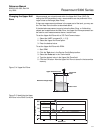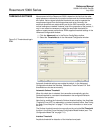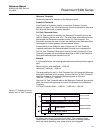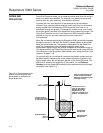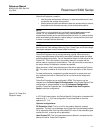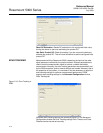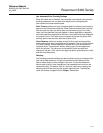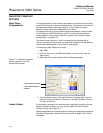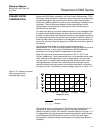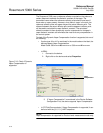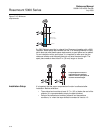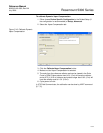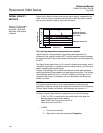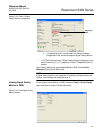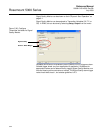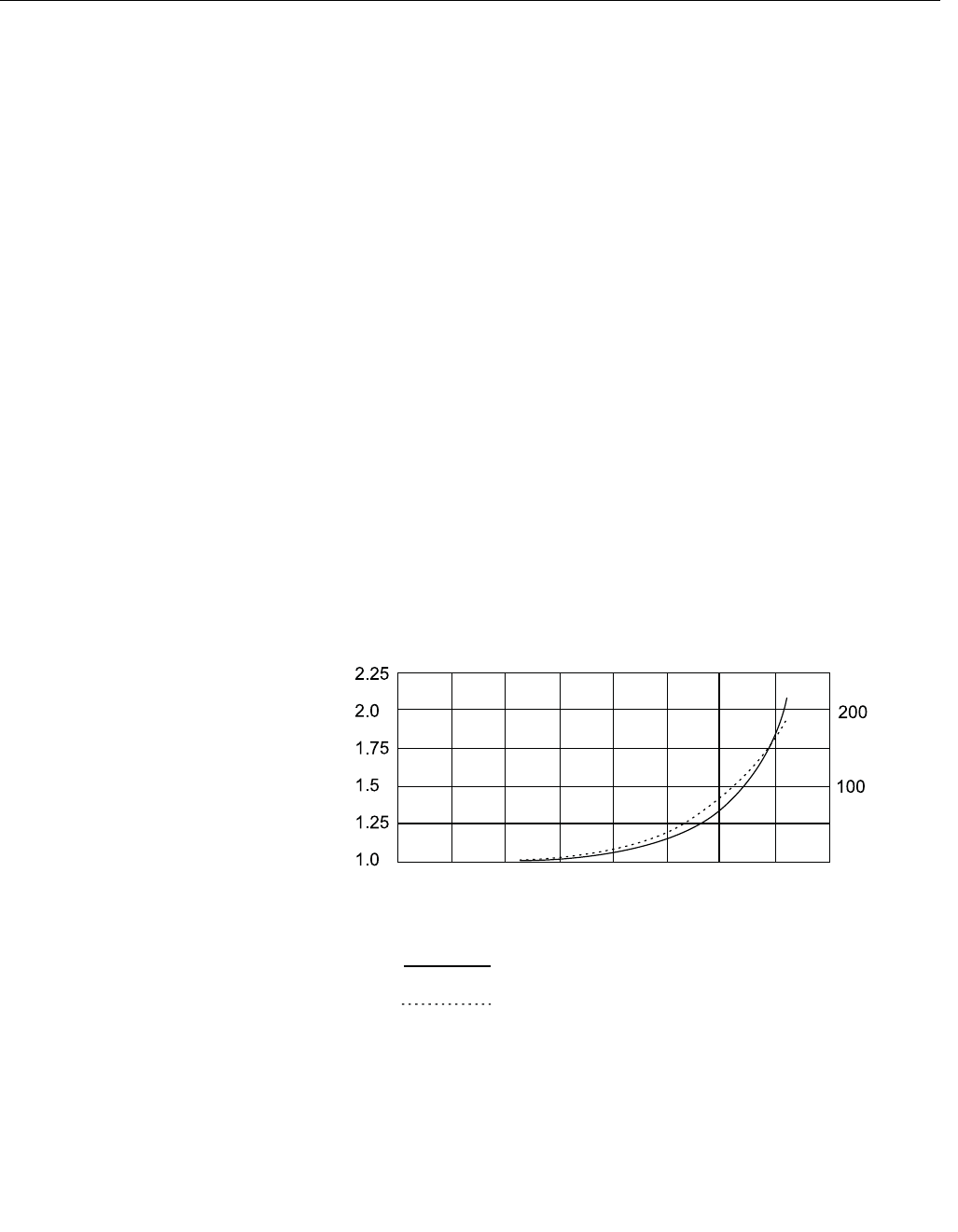
Reference Manual
00809-0100-4530, Rev BA
July 2009
C-15
Rosemount 5300 Series
DYNAMIC VAPOR
COMPENSATION
Rosemount 5300 Series is based on the Time Domain Reflectometry (TDR)
technology where low power nanosecond microwave pulses are guided down
a probe submerged in the process media. When a radar pulse reaches a
media with a different dielectric constant, part of the energy is reflected to the
transmitter. The time difference between the transmitted pulse and the
reflected pulse is converted into a distance from which the total level or
interface level is calculated.
For radar level gauging, the actual measured quantity is the propagation time
through the empty space between the radar level transmitter and the liquid
surface. For typical radar level transmitter accuracy, the propagation speed of
the radar signal should be close to the velocity of light in vacuum. However, in
some important cases, the deviation is not negligible and must be taken into
account for accuracy. High tank pressure in combination with certain gases is
an example.
High pressure water steam can influence radar level transmitter
measurements. This is due to the high pressure as well as the polar structure
of water molecules. In such cases, the Rosemount 5300 Series Level
transmitter can be configured for compensation for this effect.
Water has high critical temperature and pressure (705 ºF / 374 ºC and
140 bar, respectively). Level measurement may not be possible above these
limits. However, some applications, such as power plants, may use water
near the limits. In a closed vessel containing water liquid and water vapor,
existing databases (referred to as a Mollier diagram) have been used to
calculate pressure and vapor density, and deduce the dielectric constant of
the vapor from this. The dielectric constant changes as given in Figure C-12.
Figure C-12. Dielectric constant
versus temperature for
saturated water vapor.
The standard version of a Rosemount 5300 Series level transmitter can be
configured for static compensation of vapor by manually entering the
dielectric constant of vapor, see “Dielectric Constant Settings” on page C-14.
For applications with a varying pressure and/or temperature, certain models
of the Rosemount 5300 Series have a built-in function (Dynamic Vapor
Compensation) that automatically compensates for varying vapor dielectric
constants.
32 (0) 212 (100)
392 (200)
572 (300) 752 (400)32 (0) 212 (100)
392 (200)
572 (300) 752 (400)32 (0) 212 (100)
392 (200)
572 (300) 752 (400)
Pressure (Bar)
Dielectric constant
32 (0) 212 (100)
392 (200)
572 (300) 752 (400)
Temperature (
o
F/
o
C)
Dielectric constant
Pressure



